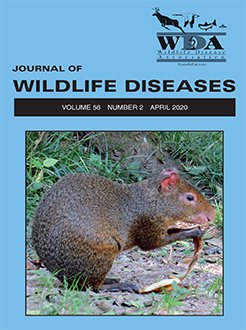Black bears (Ursus americanus) have historically been considered an uncommon host for sarcoptic mange. However, over the last 25 yr, sarcoptic mange has been increasingly reported in black bears in the northeastern US. Syndromic monitoring is the most common surveillance approach for mange in bears, but tools to monitor exposure to Sarcoptes scabiei in bear populations have not been thoroughly evaluated under field conditions. In this study, we validated a commercially available enzyme-linked immunosorbent assay (ELISA), designed to detect antibodies against S. scabiei in dogs, for use in black bears with a sensitivity and specificity of 95.6% and 96.6%, respectively. To further examine the performance of this assay, serial serum samples from seven black bears with confirmed sarcoptic mange were collected posttreatment to determine the persistence of detectable antibody response with the ELISA. Antibodies in black bears waned to below the limit of detection between 4 and 14 wk, suggesting that serology studies might underestimate the number of exposed black bears after antibodies have waned. State-wide serosurveys in Pennsylvania from hunter-harvested black bears in 2017 and 2018 showed a significant difference in seroprevalence between regions with high occurrence of mange (mean seroprevalence 6.7%, range of 6.6–6.8%) and low occurrence of mange (no seropositive black bears were detected). Within Pennsylvania, these data indicate that the geographic distribution of exposure to S. scabiei, based on serologic testing, generally reflects the distribution of overt disease, as determined by syndromic surveillance. Collectively, these results indicate the evaluated ELISA is an effective tool for monitoring S. scabiei exposure in bear populations and provides the framework for additional studies regarding sarcoptic mange epidemiology in black bears.
How to translate text using browser tools
31 March 2020
SEROLOGY AS A TOOL TO INVESTIGATE SARCOPTIC MANGE IN AMERICAN BLACK BEARS (URSUS AMERICANUS)
Kevin D. Niedringhaus,
Justin D. Brown,
Mark Ternent,
Sarah K. Peltier,
Peach Van Wick,
Michael J. Yabsley
ACCESS THE FULL ARTICLE

Journal of Wildlife Diseases
Vol. 56 • No. 2
April 2020
Vol. 56 • No. 2
April 2020
black bear
ELISA
mange
Sarcoptes scabiei
serology




